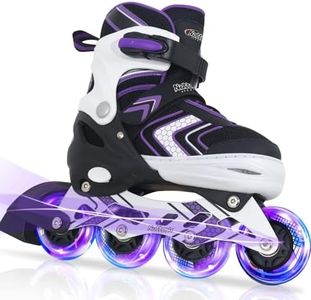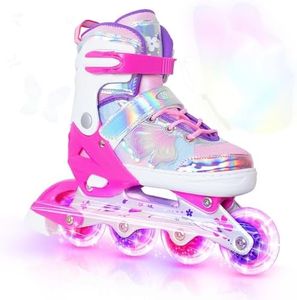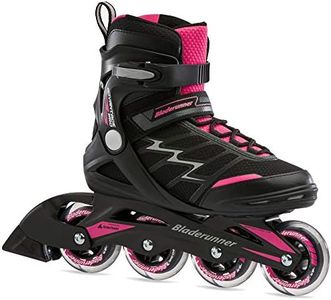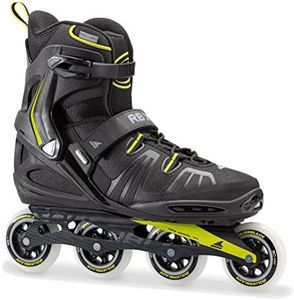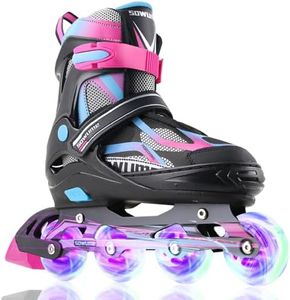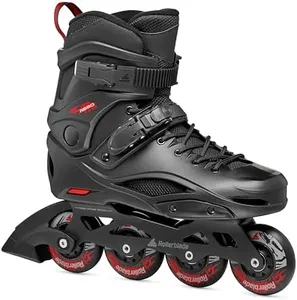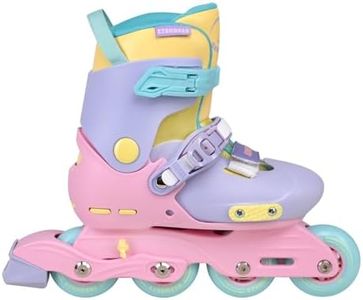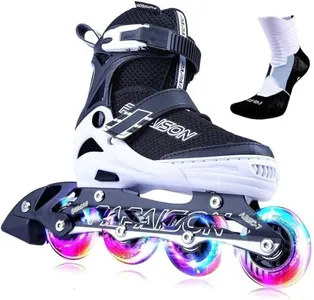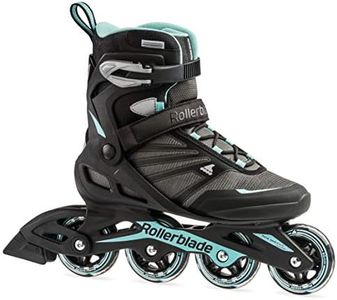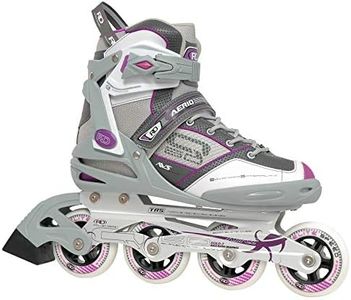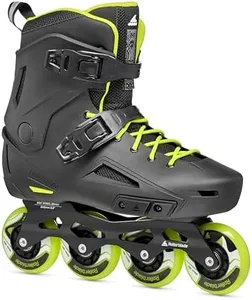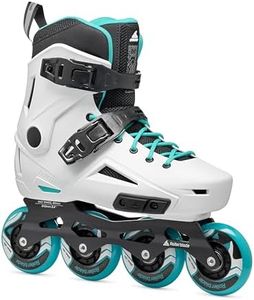We Use CookiesWe use cookies to enhance the security, performance,
functionality and for analytical and promotional activities. By continuing to browse this site you
are agreeing to our privacy policy
10 Best rollerblades
From leading brands and best sellers available on the web.Buying Guide for the Best rollerblades
Choosing the right rollerblades can make a huge difference in your experience, whether you’re a beginner looking to enjoy a casual ride, or a more advanced skater interested in speed and tricks. The key is to match your choice with how and where you plan to use them. Think about comfort, control, and your intended style of skating before making a decision. Trying a pair on for fit and comfort is always a good step, but understanding the technical specifications will help you narrow down your options before you even step into a store.Wheel SizeWheel size refers to the diameter of each wheel, usually measured in millimeters. This spec is important because it influences both speed and maneuverability. Smaller wheels, generally ranging from about 72 to 80 mm, offer better control and are ideal for beginners, recreational skating, or urban environments with lots of obstacles. Medium-sized wheels, in the 80 to 90 mm range, strike a balance between speed and handling, making them versatile for fitness and longer rides. Larger wheels, starting around 90 mm and upwards, provide more speed and smoother rides over rough surfaces but can be harder to maneuver and stop, which is more suitable for experienced skaters or long-distance rides. Choose wheel size based on your skill level and the type of skating you plan to do.
Wheel HardnessWheel hardness, usually given as a number followed by an 'A' (e.g., 80A), determines how soft or hard the wheel material is. Softer wheels (lower numbers like 78A-82A) grip better and provide a smoother ride, which is helpful for outdoor skating or rough surfaces, but they can wear out faster. Harder wheels (higher numbers like 84A and above) last longer and roll faster on smooth indoor surfaces, but offer less shock absorption and grip outdoors. Your ideal wheel hardness depends on whether you'll be skating indoors, outdoors, or a mix of both.
Boot Type and FitThe boot is the part of the rollerblade that holds your foot. Its structure and fit are crucial for comfort and safety. Soft boots offer more ventilation and comfort, making them good for recreational or fitness skating, while hard boots provide better support and protection, which is essential for aggressive or urban skating. Fit should be snug but not painful, as too much space can make it hard to control the skates and too tight can cause discomfort. Always try on a pair (with the socks you plan to use) and ensure your heel doesn’t lift when skating.
Bearing RatingBearings determine how smoothly and quickly the wheels spin, often rated using the ABEC scale (e.g., ABEC 5 or ABEC 7). Higher numbers generally indicate a finer tolerance and smoother roll, but the difference is subtle for most recreational users. Lower ratings are perfectly sufficient for casual and beginner skaters, while higher ratings matter more if you want to skate faster and longer distances where smooth wheel spin is more noticeable. Focus more on overall wheel and boot quality than obsessing strictly over bearing ratings.
Closure SystemThe closure system refers to how the skates are secured on your feet, and common options include laces, Velcro straps, buckles, or a combination. Laces offer customizable tightness but can take longer to secure, Velcro is quick but less secure on its own, and buckles are easy to tighten and adjust quickly. Most modern rollerblades use a combination for the best of both worlds. Choose a closure system that feels secure and easy to adjust to your liking and makes you feel confident and safe while skating.
Frame MaterialThe frame connects the wheels to the boot and affects the skate’s weight, stiffness, and responsiveness. Plastic frames are lighter and more forgiving, good for beginners and lighter use. Aluminum or composite frames offer more stability, support, and power transfer for advanced skaters and intense workouts. Pick a frame material that aligns with your skill level and intended use; lighter frames are often good for fitness or casual skating, while stiffer, more durable frames are better for higher speeds or trick-heavy skating.
Brake Type and RemovabilityMost recreational rollerblades come with a heel brake, which helps you stop safely, especially important for beginners. Some models allow you to remove or switch the brake to either foot, while certain performance or aggressive skates have no brake, relying on alternative stopping techniques. If you are new or plan to skate in areas where you need to stop frequently, a reliable brake is essential. As you gain skill, you may move to setups with no brake depending on your style of skating.
